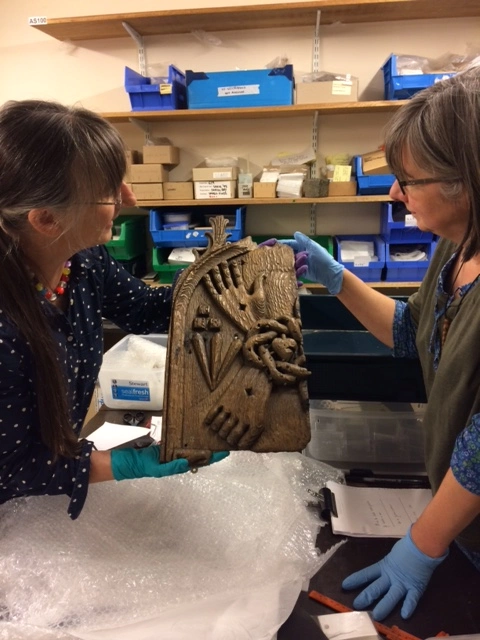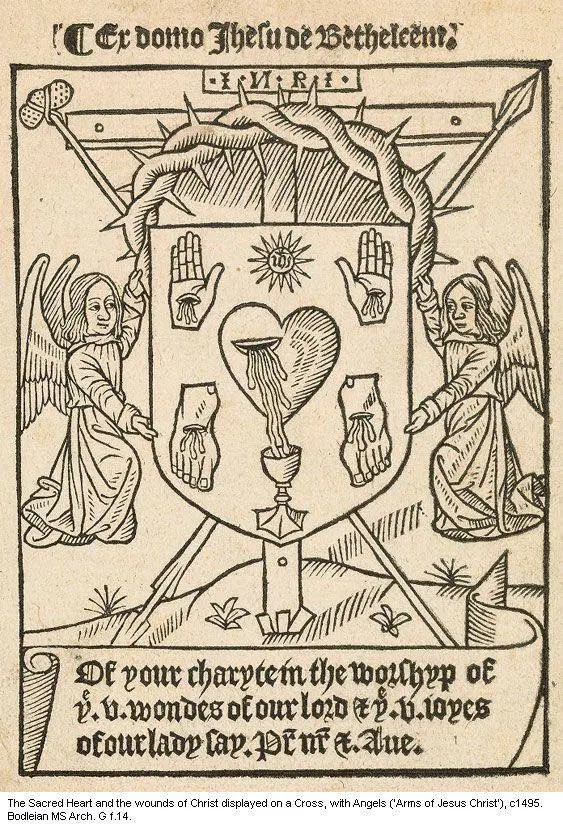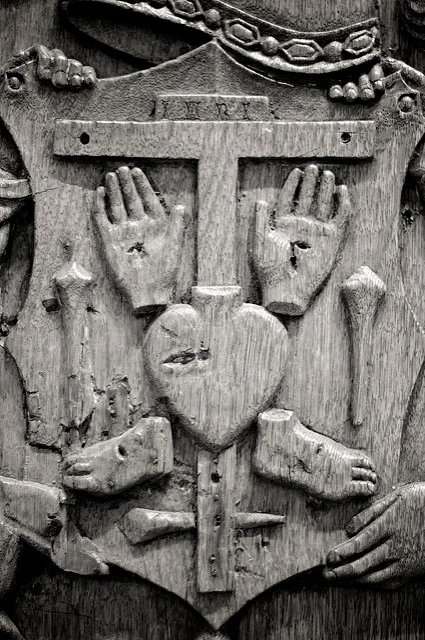Carved wooden crucifixion plaque from St Magnus Cathedral
Dr. Alison Sheridan of National Museums Scotland visited the Orkney Museum to undertake a condition assessment of artefacts on loan from NMS ahead of our Medieval Gallery refurbishment.
When looking at a wooden carving of the crucifixion, she and our archaeology curator Gail Drinkall found something very exciting! A handwritten note describing how this object came to be in the possession of the Society of Antiquaries in 1805, via someone signing himself ‘P.N’ was carefully revealed when being examined.

The note begins just as Principle Gordon’s article in Archaeologia Scotica (1972, Volume 1, pages 256-268) reads:
“In this cathedral I found thrown aside, a piece of carved wood, which attracted my notice. It is a board of a foot and five inches long, and ten inches broad.

On this board are carved the hands and feet of our Saviour, in the form of a St. Andrew’s cross. The upper part of the cross is composed of the hands, the lower of the feet, a foot being opposed to each hand. In the center, where the hands and feet meet, there is a crown of thorns ; in the center of the crown, a heart pierced on the left side. In the vacant space on one side,
are three nails and three dice ; on the other, a scourge :
The whole was overtopped by an Earl’s coroner; but it is now broke off from the board, and the board itself is rent through the middle vertically. I was informed that this piece of carving stood formerly on the fore part of the old pulpit, which falling to decay, a new one was erected in its place in 1689, but without the ornament affixed to the old one. How this remnant of the Roman Catholic religion escaped the zealous eye of the first reformers, is to me a mystery ; but, since it is come down to our times, though in a mattered condition, it were some pity to allow it to perish by neglect. On my hinting something
of this kind to the present minister and Provost of Kirkwall, they promised to get the pieces put together by clasps, and framed”.

A representation of the Five Wounds of Christ in a book dated c1495 in the Bodleian Library.
However, it seems that this reconstruction did not happen, and the handwritten note continues:
“I promise however this made to … had been overlooked or forgotten (17th January 1805) for in September 1804 above described carved was found tossing about the cathedral by masons engaged in repairing the roof … with it as a board to carry lime on their … Scandalised at this shameful treatment of so curious remain in an ancient Danish cathedral and to prevent it from utterly perishing .. it was speedily … (but cognisant at this time of its handling by Principle Gordon) I brought it away, giving the workmen money to procure another lime board and now considering that it has been described in their transactions, I shall be happy if the Society of Antiquaries shall allow a place in the collections. The other half of this board was not to be seen…which…whole”.

Thanks to P.N the board was rescued from its use as a lime board is now safe for us all to enjoy! It has been back on display in our newly refurbished Medieval gallery, kindly on loan from the National Museum of Scotland
